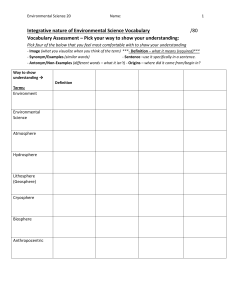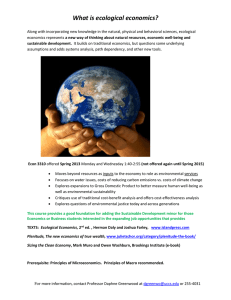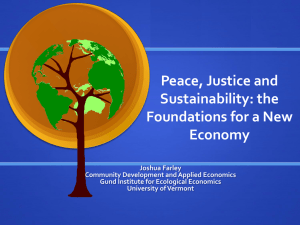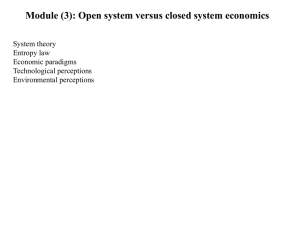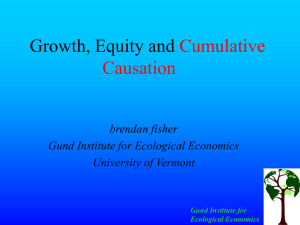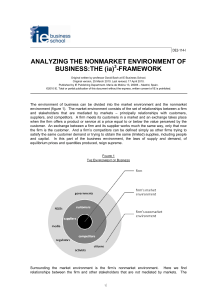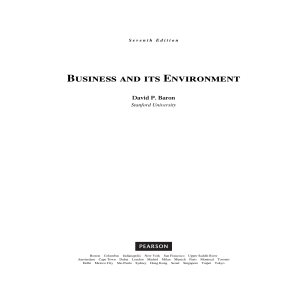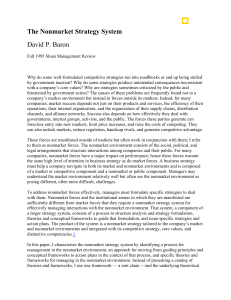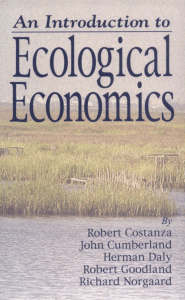Chapter23: Ecological Economics
advertisement
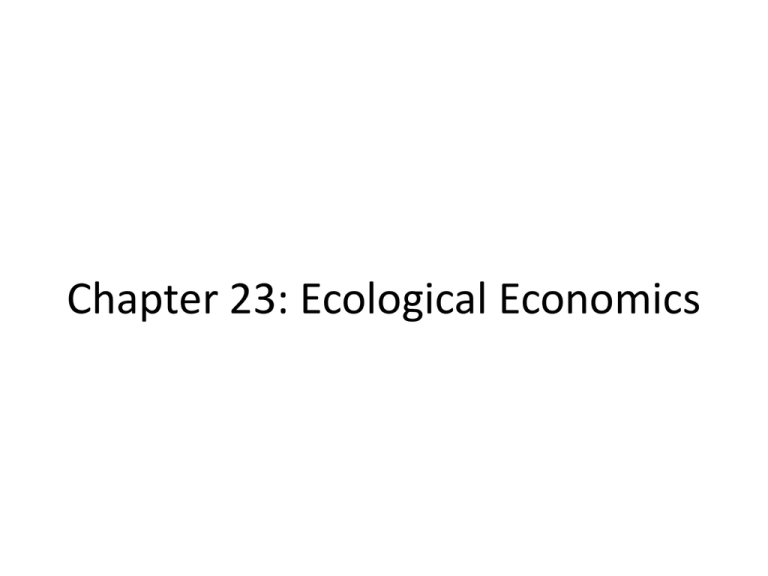
Chapter 23: Ecological Economics 23.1 Economic Worldviews • Can development be sustainable? • Our definitions of resources shape how we use them • Classical economics examines supply and demand • Neoclassical economics emphasizes growth • Ecological economics incorporates principles of ecology • Communal property resources are a classic problem in ecological economics Freedom and Growth • 1200-1500 Growth in European internal markets • 1500-1900 Territorial Expansion • 1700-2000 Scientific and Technological Expansion • Everyone gets a Bigger Slice • Can Freedom Exist in a Zero-Sum World? The Laffer Curve 23.2 Population, Technology, And Scarcity • • • • Scarcity can lead to innovation Carrying capacity is not necessarily fixed Economic models compare growth scenarios Why not conserve resources? 23.3 Natural Resource Accounting • Gross National (Domestic) product is our dominant growth measure • Alternate measures account for well-being • New approaches incorporate nonmarket values – Nonmarket values can’t be spent in the marketplace • Cost-benefit analysis aims to optimize resource use 23.4 Market Mechanisms Can Reduce Pollution • • • • Using market forces Is emissions trading the answer? Sulfur trading offers a good model Carbon trading is already at work 23.5 Trade, Development, and Jobs • International trade brings benefits but also intensifies inequities – NAFTA • Aid often doesn’t help the people who need it – Theft, Misappropriation – Inefficiency and Bureaucracy – Ethnic, Religious and Class Rivalry • Microlending helps the poorest of the poor 23.6 Green Business • New business models follow concepts of ecology • Efficiency starts with design of products and processes • Green consumerism gives the public a voice • Environmental protection creates jobs • Personally Responsible Consumerism
